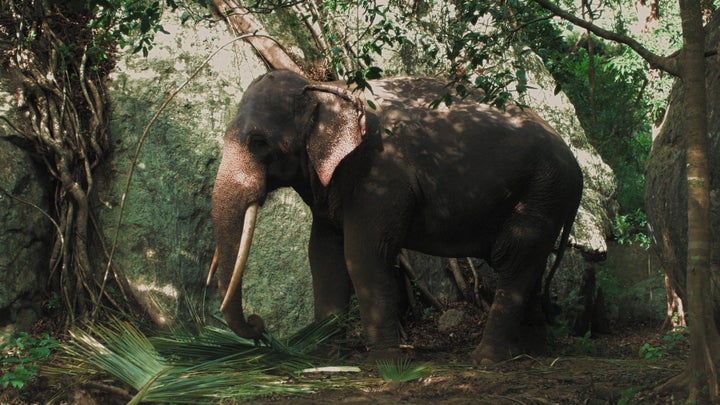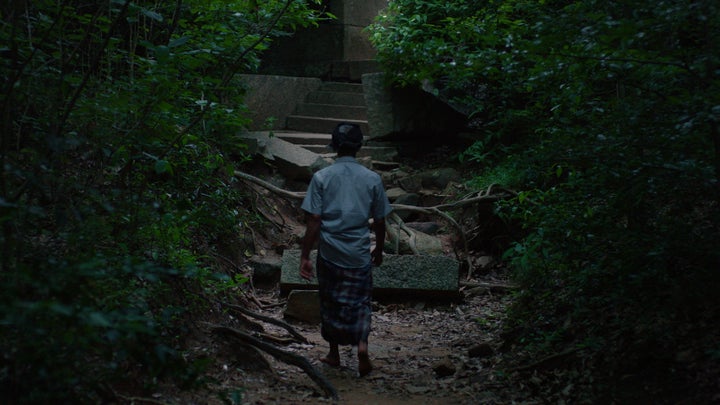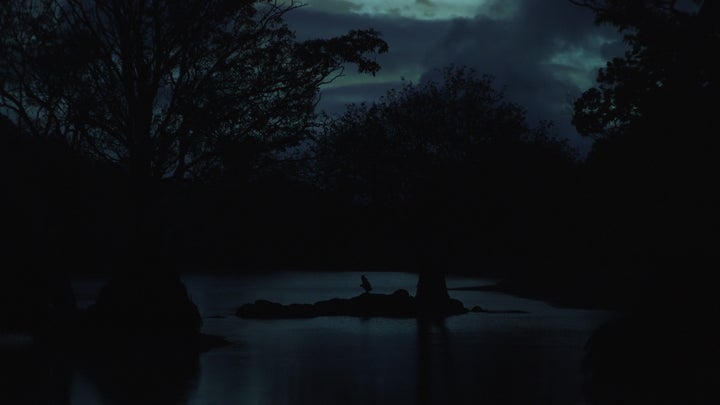Dealing with solitude, harsh environment, limitless time, observation and self-reflection, Carlos Casas’ films are no more an encounter but something more intimate. His works are full of metaphors and images that speak to this sensibility. He explores to some extend uncharted territories, and through the discovery of landscapes and seems of cultural articulation, he implies new fields of thought. Part documentary, part art film, his new project Sanctuary is a site-specific infrasound environment and a cinematic gaze inspired by the mythical elephants’ graveyard – a place where elephants go to die. The film is an exploration of that myth, of memory, death and reincarnation, and of our own vision and understanding of the environment.

Joana Lazarova: In Sanctuary, you weave in an almost archeological mapping of an ancient story. Can you tell me more about it?
Carlos Casas: When I started the project, for me, it was more a search to understand where that idea or that seed was coming from, why my fascination for the elephant’s graveyard, why it got stuck on my mind, right at that time, and after some research, I understood that in some ways the seed was planted in my imagination by watching Tarzan at younger age, probably when I was 7 years old, and rewatching it while doing the research, I understood that my will to work on the graveyard was also my will to understand the power of cinema to transport us to places of the imagination, to a place of the imaginary, a place we are not allowed to enter. It was at that moment that I had just finished a trilogy on the most extremes locations on the world, in Siberia, the Aral desert and Patagonia, a kind of diagonal scan of the world, and also, I had just had a daughter. In some ways, now that the project is nearly finished, I see this film as a result and I needed to go back to that childhood glance, that fascination for the unknown, the feeling I had when I saw Tarzan, Jane and his father arriving to that forbidden graveyard; from there I had to understand where that myth came from when it got Burroughs hooked, and then Kipling, and Sindbad, and then Sri Lanka, where I shot the film. I like that you mention archeological mapping, because it is actually a sort of archeology of the myth, layer by layer each testimony brings it to the next generation transformed in present-day narratives in different forms and shapes, but with the same seed, a deep sense of wonder for nature and our neighbouring species. For our deeper connection to our ancestral past that lies within us.

JL: Where could ‘the place we need to arrive to reincarnate to migrate to our next stage’ be?
CC: Well, in some ways, it is our duty to find out where we have to migrate next, where is our next journey taking us, where is that place and where it might lead us. The graveyard acts as a collider – an active image of that place we still cannot access. We have exhausted all territories, yet there are still places we cannot access and where we long to return, like our childhood, like our own planet, which is also our cemetery, or like home – we are in perpetual move, migrating from one state to arrive to another.

JL: Soundscape takes a big place in your work, and your films deal with the concept of solitude. Without words, they evoke emotions, and you make appeal for us to find and understand human and social condition.
CC: Sound is for me the beginning – the new sensorial driving force and order, in a way – the new cinema. I believe parallel to my fascination with the myth there is also the true fascination for elephants, their social structures and communication and also their amazing intelligence and sonic culture.
JL: It’s almost as poetry lives in certain places, where silence begins to speak. Can the absence of dialogue be seen as a creative force?
CC: When two people that don’t speak the same language and try to understand each other, they create a new system, a new flux of energy to express themselves. Travelling in some of those places has taught me to understand with my body, to communicate with my aura, my energy, my presence, which is a language that you develop while working in remote and distant places, foreign places. While living with people that you don’t fully understand, you expose yourself more, you become more vulnerable but also you receive more, and you actually become a better person. The same could happen with dialogue in films, I believe that if you allow the spectator to grow and to recreate himself within your film – the more freedom you allow, the more possibilities you uncover, and more synergies are generated.
JL: There are some things that speak with universal language, for example the natural forces. We can learn a lot from them. END, a trilogy about the most remote places on earth, emphasizes the fragile equilibrium in which some of us live. Can you tell me about the location of the sets you choose?
CC: In my previous films, I tried to find poetry in forgotten places and people. I believe that in those places, this periphery of civilization, is where I find the most pure human character. I always say that making those films is for me like a time machine that takes me to a certain past, a certain moment in time, far from my present time, and that gives me strength, perspective, understanding of who I am and who we are, and hopefully, where we are going. In some way, all locations of my films are connected to a certain creation myth, places that somehow recall a past, and that cast a ghost in us, like in Patagonia, Aral, Siberia, Sri Lanka, the Pamirs, or Svalbard, and Krakatoa, to name a few. A location holds everything together, it centers the idea, the message, the context for the film to be developed, and foregrounds the idea.
JL: Filming is a lot about understanding and recreating our surroundings. What is the best way to know space?
CC: To film a place is to find its soul, to communicate with it and be possessed by it, and allow yourself to be taken by it, moved, impressed and sometimes even sicken or hurt by it. There is something amazing about those places – they hit you hard and become part of you, like a ghost entering inside you. I believe all those places inhabit me, they have possessed me. I remember very dearly my first journeys in Patagonia, and some of its inhabitants, which I believe still dictates how I understand people, how I appraise people in the world, they have become my measure, my ability to position myself within a bigger community. Manquin, the lonely puestero in the middle of Tierra del Fuego, struggling to learn to read has taught me what is silence, or Eddie, the whale Hunter, that taught me what is to hunt, or Jonboz in the Pamirs who taught me about Craft as a Spiritual Practice. Every journey brings out something deep and leaves an imprint on your memory.
JL: Where does the impulse to create begin?
CC: For me, it comes from the hunger for knowledge, hunger for experience and deep fascination for the world, to capture and share moments that help to enlight, to test and put myself in situations where I can improve myself as a person, where I can feel alive and learn, grow.
Sanctuary premieres on March 31 at Tate Modern with a live sound presentation with Chris Watson and Tony Myatt as part of the BMW Tate Live Exhibitions in London. More about Carlos Casas’ work at www.carloscasas.net
